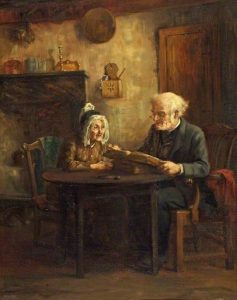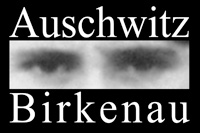
One generation ago, on January 27, 1945, the Red Army liberated the Polish town of Oświęcim. The world has come to know that town not by its Polish name, but by the name its Nazi German occupiers called it: Auschwitz. This account of my visit to Auschwitz is offered again in memory of the 1.1 million human beings whose voices were stilled there.
On January 18, 1997, I had opportunity to visit the death camp at Auschwitz. This is the story of that visit. I publish it now as a necessary reminder of what has happened before, for without such reminders we would be only too quick to let it happen again.
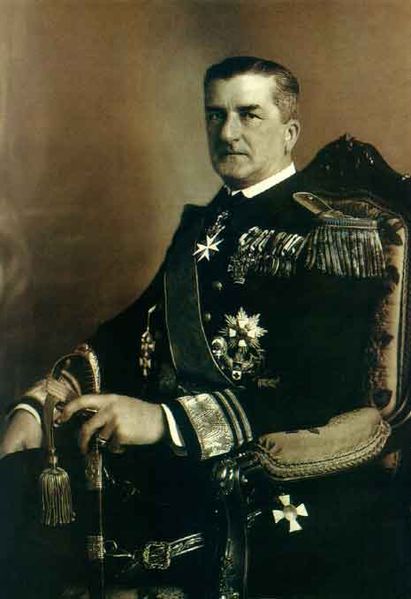
Regent of Hungary
Admiral Miklós Horthy was not high on the list of Adolf Hitler’s favorite people. He had proven a lukewarm ally throughout the war. Even though Horthy’s Hungarian legions had fought bravely alongside the Wehrmacht in the Soviet Union since 1941, Horthy’s government had never given its unqualified support to the Nazi regime. A particularly sore point was that the Hungarians refused to surrender their Jewish citizens for deportation. True, the leaders in Budapest had enacted repressive laws against Jews, but they never permitted the Germans to gain any measure of control over Hungary’s Jewish population. Consequently, Hungary became a place of refuge for Jews from Romania and other nations whose governments were far less willing to defy Hitler.
Perhaps the Führer would have overlooked Horthy’s insolence in this matter of the Jews had this been the only matter of concern. Yet events during the spring of 1944 brought this and other issues to a head. By March of that year, the Red Army had thrown the Nazi invaders almost completely out of Soviet territory. In the West, the Allies threatened to invade France as soon as the weather proved favorable. Such disagreeable developments merely underscored Hitler’s compelling need for full cooperation from all his allies. Since Admiral Horthy would neither listen to reason nor acquiesce to demands, Hitler employed other means to ensure Hungary displayed the appropriate measure of National Socialist ardor. German soldiers accordingly occupied Hungary late in March. Although they left Horthy in control of Budapest and its surrounding region, the remainder of the country fell completely under Nazi control.
The fears of Hungary’s Jews soon became reality as the Fascists implemented the Führer’s orders. Over the summer of 1944, 300,000 Jews found themselves crammed into cattle cars and shipped off to some faraway place. The Nazis told them they were to be resettled in the conquered lands of the East. Some believed the lie, either out of naiveté or out of the need for a hope of an end to the nightmare that had fallen upon their world. Some did not believe it. Some even whispered of the rumors that the Nazis had built a death factory and were herding all the Jews into it.
Admiral Horthy heard these rumors as well. He was no lover of Jews, but he was a refined gentleman. He was also a realist who understood what was happening to his country. An appeal from Pope John XXIII on behalf of the Jews helped to sway Horthy’s mind, and late in June he reasserted control over all of Hungary. Thanks to this, and to Allied bombing of Budapest, the deportations stopped for a brief time – but only a brief time. The Germans soon put Horthy in his place, and removal of the Jews resumed. Horthy protested and resisted up to the moment the Nazis arrested him in October, but to no avail. By the time the Red Army smashed into Budapest in late December, almost all of the Jews who had sheltered within Hungary’s borders were gone. Most of them were dead.
The story is true. I know.
I saw where they died.
The place is called Auschwitz.
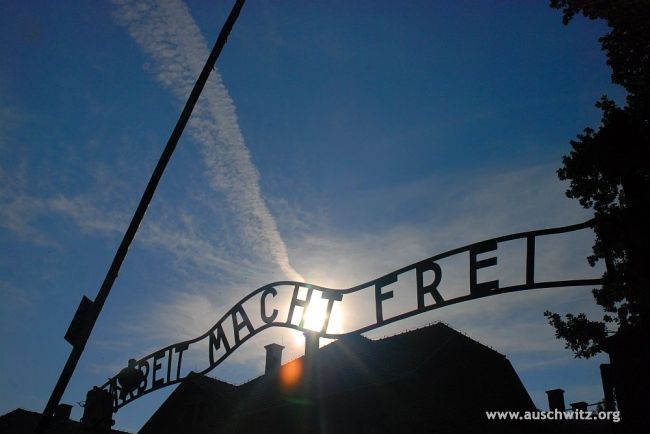
Auschwitz-Birkenau State Museum
www.auschwitz.org
I knew full well what to expect when we approached Auschwitz, but there was no way I could have been prepared for the assault which fell upon my soul at that place. In happier times, this little town in southern Poland had a pleasant name: Oświęcim. It was, and to some extent remains, a pretty place peopled by industrious Poles who work their farms and factories in peace. It is only they, however, who still call this town by its Polish name. Since 1945 all the world has known it by the name which the Germans placed on it.

Auschwitz-Birkenau State Museum
During the course of World War II, Hitler’s Nazis slew some 13 million people in their concentration camps. All the world knows that 6 million of those slain were Jews. What the world does not always remember is that 3 million of those Jews were Polish, and that another 3 million non-Jewish Poles also died between 1939 and 1945. Of all the nations touched by World War II, Poland lost the greatest percentage of its population. By 8 May 1945, one out of every five Poles had died in battle, of starvation, of disease, and of Nazi and Soviet brutality. Poland therefore had reason to preserve the horrors of Auschwitz as a memorial to the rest of the world.
Auschwitz was not the only Nazi death camp, but it was by far the largest. There were actually three camps in and around Auschwitz. The main camp, first established in 1940, stands on the site of a pre-war Polish Army barracks. The second, and largest, camp is at Birkenau (Brzezinka), 3 kilometers away. Birkenau served as the primary site for mass extermination of Jews. The third camp was Monowice. That place, located on the compound of the IG Farben works which the Germans built in Auschwitz, served as living quarters for the slave laborers who worked in the factory. Throughout the five years of their operations (1940-45), those camps fed the needs of the Reich by providing laborers, materials, and places to dispose of those whom the Nazis deemed less than human. No one knows exactly how many people died there, but it cannot be less than 1,500,000.
The mere fact of their deaths is disconcerting in itself, but not overwhelmingly so. It is the way they died and the purpose behind their deaths that wrap around the soul like fists if ice. I have been to one other place where so many people have suffered. That place is the battlefield at Verdun, where 1,500,000 French and German soldiers suffered grievous wounds during ten months of hell in 1917. Some 300,000 of those soldiers died. Yet even at Verdun I did not come away smitten to the very core of my humanity. The men who bled and died there did so knowing full well why. They fought to preserve their nations, their homes, their families. Even if their sacrifice occurred in the midst of a senseless battle, it was nevertheless honorable and therefore understandable. It was not so for the victims of Auschwitz. They died of starvation, torture, disease, and outright extermination simply because a madman and his followers deemed them unworthy to live.

Auschwitz-Birkenau State Museum
Our first acquaintance with the horrors of Auschwitz came in the form of a film. This was the original film which Soviet soldiers prepared when the First Ukrainian Front liberated Auschwitz in the spring of 1945. As one would expect, the Soviets used their considerable skills at propaganda to underscore the Fascist atrocities. They need not have bothered with their enhancements. The atrocities spoke of their own accord without amplification. The images in that 15 minute film brought tears to my eyes. It would not be the last time that I wept on that day. How can one not weep upon seeing emaciated children bare their arms to show the identification numbers tattooed on their wrists? Those children gazed with unseeing eyes upon their Soviet liberators. They showed no joy at their freedom, but only an expressionless stare. That is what moved me more than anything. Children should not look like that. Only men who have endured hard battle should look like that. Children should laugh and play, filled with that unquenchable spirit which brings laughter to the world. They should not move like automatons. In the faces of those children I saw the tragedy of lost innocence. They had experienced a lifetime of horror in such a short time, having lost friends, family, and all that is normal in the world. In place of this loss Hitler’s legions gave them only pain, emptiness, and fear. I wept for the children, both for what they had endured and in the knowledge that the memories of that endurance would haunt them for the remainder of their lives.
The film set the stage for what we would see next. At its conclusion we met Jan, our guide. We could have had no better guide. Jan had lived most of his life in Auschwitz. In 1940, when he was 9 years old, the Nazis took him, his family, and the rest of the townspeople away. All who remained were those few Poles whom the Nazis deemed necessary to support their operations. Jan was fortunate. He and his family spent the war years on a farm far away from both Nazi and Soviet barbarities. Nevertheless, the events at Auschwitz touched them closely. Not only did they return home at war’s end to find the remains of a death camp on their doorstep, but the camp itself had claimed some of their loved ones as victims.
Jan spoke in clear but accented English as he led us down the camp’s main street. In dispassionate tones he described in vivid detail what had happened there. The first thing he pointed out as we entered the camp was the mocking wrought-iron inscription over the gate:
ARBEIT MACHT FREI
Loosely translated, those words mean, “Work brings freedom”. They are the words of an empty promise, one of many the Nazis bestowed on their captives. Each morning prisoners assigned to work parties would shuffle out of the camp to the tune of German marches played by the prison orchestra. The work parties would return in the evening, greeted by the orchestra and that leering promise of freedom in exchange for hard labor. There were always fewer prisoners in the returning party. Many would die during the day, overcome at last by starvation and disease, or shot dead by zealous guards as punishment for some infraction. Yet in the morning another party would shuffle out the gate, its ranks filled with new prisoners to replace those who had died the day before.

Auschwitz-Birkenau State Museum
Continuing on, Jan showed us the gallows where the Nazis had hanged 12 Poles all at once for supposedly helping three prisoners escape. That gallows stood along the street where the roll calls occurred twice each day. At the appointed times, morning and evening, the entire prison population assembled along this street and remained there until the SS guards had called each by name. The number of names varied from 13,000 to 16,000 day by day. In 1942 that number reached 20,000 for a short time, until the new camp at Birkenau relieved some of the excess population. Whatever the number, each man, woman, and child had to be accounted for. The prisoners would therefore stand at attention for as long as it took to verify the presence or accounted absence (usually meaning death) of each person. If the numbers did not match those of the previous roll call, the roll call would begin again under the watchful gaze of the SS. On one such occasion, the SS kept the prisoners standing out in the cold for 19 hours until they had resolved a discrepancy.
The roll calls and the long hours of hard labor were bad enough, but these were only part of the suffering inflicted on the prisoners of Auschwitz. In the beginning, when a prisoner first came to the camp, he or she would surrender all personal belonging and be issued standard prison clothing. This consisted of crudely made striped garments – shirt, pants, and hat for the men, a dress and kerchief for the women. On their feet they wore wooden clogs. It was unsuitable clothing, too thin to offer protection from the cold, seldom changed, and never washed. A colored triangle on the breast of the men’s shirts identified their nationality and the reason for their imprisonment. Many of the inmates were political prisoners. Some were Communists, homosexuals, or traitors to the regime. The Jews had a special identification: a yellow Star of David.
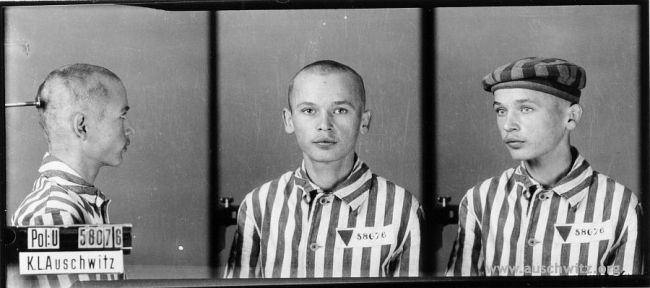
Auschwitz-Birkenau State Museum
The photographs, or those that survived the Nazis’ attempts to destroy the evidence of their crimes, showed all of this. Many of the surviving pictures hang on the walls of the camp buildings. Jan pointed out several to us. As he explained the stories of the various prisoners, we soon came to understand that no one was immune to imprisonment in Auschwitz. The pictures included simple farmers, college professors, housewives, teenage girls, lawyers, doctors, common laborers, and many more from every walk of life. They had all come to Auschwitz for essentially the same reason. Whatever their crime, the Nazis considered them a threat to the regime. The information on the photographs did not include the specific crime, but it often included both the date when the prisoner had entered the camp and the date of his or her death. The span of time between those two dates never went beyond a few months. In many cases, that span was but a few weeks.
The Nazis did not photograph every prisoner. After a time the number of people herded into the camps became too great for the administration to process efficiently. The photographs were proving a waste of time and resources in any case. They prisoners rarely survived for very long, and few of them ever escaped, so there was really no need for photographs at all. Consequently, the SS adopted the much more efficient and practical measure of tattooing identification numbers on the wrists of each newly arrived prisoner.
The final stage of inprocessing involved assignment of the prisoner to a cell block and work detail. Each solid red brick building of the camp was a block. They had surely proven substantial and even comfortable housing for the Polish soldiers who lived there before 1939. In expanding the camp, the Nazis had compelled the prisoners to construct additional buildings and add upper stories to each existing structure. In that way they could cram several hundred people each into buildings originally intended for perhaps one hundred soldiers. In such conditions, rats, lice, and other vermin multiplied. Disease also passed quickly through the blocks. Few survived the multitude of sicknesses. Those who did not die in the blocks went to the hospital. SS doctors checked over each sick or weak prisoner. Those whom they judged incapable of quick recovery went immediately to the gas chambers, or were murdered by the injection of phenol into their hearts. No wonder, then, that the hospital became known as the “anteroom of the crematorium”.
Many of the blocks now serve as exhibits and memorials to different aspects of Auschwitz. Some of them are wholly devoted to prisoners of a certain nationality or ethnicity. These include Poland, the Soviet Union, Czechoslovakia, Yugoslavia, Austria, Hungary, France, Belgium, Italy, the Netherlands, and, of course, Europe’s Jews. The fact that some of those nations no longer exists does not change the meaning of the exhibits. People from each of those places, and many others, came unwillingly to Auschwitz. The Jews came from as far away as Norway, Greece, Soviet Russia, and France.
Blocks 4 and 5 house exhibits devoted to the mass exterminations at Auschwitz. Here Jan explained that the Nazis had several means of inflicting death. Starvation, exhaustion, and disease killed about half of the victims. Shootings, beatings, torture, and other forms of murder killed many more. The most chilling form of death, however, was the gas chamber. The chambers themselves were at Birkenau, as were four of the five crematoria. Only one of those buildings still exists: the crematorium at Auschwitz. Of those at Birkenau, the prisoners destroyed one during an uprising late in 1944, and the SS destroyed the rest just before the Soviet troops liberated the camp.
The chilling aspect of the gas chambers and the crematoria is that they were so grotesquely efficient. The Germans had built them for the sole purpose of killing many people all at once. The death factories operated at their peak during the summer and fall of 1944. It was these near-perfect instruments of genocide that enabled the Nazis to exterminate almost all of Hungary’s Jews in only three months.

Auschwitz-Birkenau State Museum
The horrid process began with the arrival of a prison train consisting of cattle cars crammed with human cargo. The train would roll into Birkenau along a special spur built for the purpose of delivering people to their deaths. When the train stopped, SS guards would open the doors to the cattle cars and the occupants would spill out onto the platform. These people would have traveled for days or weeks in the same cars. Many, of course, never survived the trip. Those that did make it as far as Birkenau arrived with all their remaining worldly possessions in hand. Since the Nazis had told them they were to be resettled in the East, they had brought with them everything they could carry. Their possessions included pots, pans, toilet articles, cooking utensils, and every item one might associate with the needs of everyday life. Their owners would not need them much longer, however,

Auschwitz-Birkenau State Museum
Once the train was empty, the SS issued the next instructions to the assembled masses. As part of their further processing, they were to undergo delousing. That meant showers for everyone. All the people therefore would leave their personal belongings on the platform where they could be claimed later. Having done this, the prisoners formed several lines. Each line passed before an SS officer who would quickly assess every person. Those who seemed fit for work moved off to the left. They joined a group destined for internment in the camp. The weak, the elderly, the sick, and the very young continued on to the showers. Far, far more people remained in this group.
The “showers” were the gas chambers and crematoria, all combined in one large building. The entrances to each of the four complexes were only a hundred yards or so from the train platforms. These doors led into anterooms where the prisoners removed their clothing. Men went into one room, women and children into another. All of them, once naked, proceeded on to the “shower” rooms. These were bare concrete chambers with but one door, yet they featured spigots and handles that served to perpetuate the deception up to the very last moment. When a room had filled with people, guards shut and barred the steel doors. Small windows in each door permitted the guards to watch what happened next.

Auschwitz-Birkenau State Museum
Once each prisoner was safely locked away, other guards in a chamber far above them would open cans of Zyklon B, an especially effective chemical agent first tested at Auschwitz in September 1941 on some 600 Soviet prisoners of war and 250 sick prisoners from the hospital. The guards would pour the crystals of the compound into tubes that led directly to the “shower” rooms. Once in contact with the moist, hot air of those rooms, the Zyklon B became active, filling the chambers with deadly fumes. Those who guarded the doors would then watch and wait until all the screams and frantic attempts to escape had subsided. After fifteen or twenty minutes – half and hour at the most – everyone inside would be dead, and the cleanup could begin.
This disagreeable task fell to the Sonderkommandos, prisoners whom the SS had charged with special duties. These men would remove each body to a processing chamber where other Sonderkommandos extracted gold teeth and removed the hair from each female corpse. When everything useful had been taken from the dead, the bodies then went into the huge ovens where they were utterly consumed. In the meantime, still other Sonderkommandos gathered up the clothing left in the anterooms and all the other personal possessions left on the train platform. Every item, once sorted, went to a designated place in one of the many warehouses built for the purpose. From there it went to the Reich to serve the needs of Hitler’s nation.

Auschwitz-Birkenau State Museum
Birkenau’s prisoners called these warehouses “Canada” in honor of a country they believed to be incredibly rich. Rich indeed, for Birkenau’s “Canada” contained the possessions of hundreds of thousands of condemned victims. Some of that booty is now on display at Auschwitz. We saw there thousands and thousands of shoes, hundreds of suitcases, and sacks full of women’s hair, all piled to the ceiling in great display cases. Why did the Nazis harvest hair? They did so because human hair, when combined with other fibers, produced a very durable cloth exceptionally well-suited for the needs of soldiers. There were no gold, jewels, coins, or other valuables on display. All of that had gone straightway to the Reichsbank to help finance the war effort. We did, however, see other evidence of Nazi genocide: china, silverware, books, tins of shoe polish, shaving items, and clothing of all styles and sizes. All of it, every single piece, had come from the numberless victims, most of whom had died in the chambers. Worse still, the treasures on display included a number of dolls and infant clothes, showing us that no one, no matter how young, was invulnerable to Nazi hate.
All of this we saw in Blocks 4 and 5, and later at Birkenau. We were not done, though, for there was yet more horror to behold. Jan led us on to Block 11, known appropriately as the “Death Block”. In that place the SS confined those who had transgressed the rules of the camp. Perhaps they had contacted the Polish underground or attempted to escape, or perhaps they had merely failed to follow an order quickly enough. Some who went to the Death Block did so because they had relieved themselves at the wrong time. Under the camp rules, prisoners were allowed visits to the toilet once in the morning and once in the evening. Any discharge from the bowels or bladder outside those designated times constituted a violation of the rules, and therefore called for punishment.
As bad as this sounds, we learned it got even worse. When Birkenau first came into existence, there was but one latrine. Prisoners would form long, long lines at its entrance while waiting their turn. Everyone did get his or her turn – all ten second of it. Those who lingered longer than those precious ten seconds found themselves beaten out the door whether they were finished or not. But who, then, could take care of the body’s needs in only ten seconds? That would be difficult even under the best of conditions. For people suffering from dysentery and other ills, it was impossible.

Auschwitz-Birkenau State Museum
Some who transgressed in the matter of personal comfort, therefore, ended up in the Death Block along with all manner of other transgressors. Jan explained to us that the Death Block was just that: a place from which no prisoner left alive. The Nazis saved their most vicious tortures for people confined there. Flogging, hanging by the hands, excessive physical exercise, and prolonged standing were but some of those tortures. Those prisoners who had further angered their captors went before an SS officers who acted as judge and jury in a special “trial”. If found guilty, the prisoner would be marched out to the alley between Block 11 and Block 10, stripped naked, and placed against the “Wall of Death”. One pistol shot behind the ear finished the matter. Some, however, did not make it that far, as we saw from the bloodstains on the walls and ceiling of the “trial” room. Still others found themselves confined in special cells. Some of these cells kept the prisoners in total darkness, some kept them in complete isolation from all human contact. At least one cell was designed to induce death by suffocation. In others, prisoners condemned to starvation would wait without food until death came at last. Most cruel of all, as it appeared to me, were the “standing” cells. These were brick enclosures perhaps three feet on each side. Four men would stand in each, giving every man about one square meter of space. Guards would watch them through the night, making sure that every man remained standing the whole time. The next morning, these prisoners would march out with the normal work parties and perform the required 12 or more hours of labor. They would return to the Death Block in the evening for another night of continuous standing. This process would usually continue until the prisoner died in one way or another.
I have described almost all of what we saw at Auschwitz. There is another thing, though, that I cannot fully describe, for it was too horrible. Auschwitz was the place where Joseph Mengele and his associates conducted their medical “experiments” on countless victims. Many of these were twins, chosen for a specific purpose. Mengele hoped his “research” on twins would unlock a secret to multiple births and thereby provide a means of rapidly expanding the German population. There was one photograph I saw of twins on whom Mengele had worked. Whether they were boys or girls I could not tell, but in the picture they lived still. In their eyes I could see the reflections of horrible pain. I do not know, nor do I care to know, exactly what happened to these children, nor the nature of Mengele’s experimentation. There are some things of which human beings ought to have no knowledge at all.

Auschwitz-Birkenau State Museum
I witnessed a lifetime of suffering in those five hours at Auschwitz and Birkenau, and came away horrified. It seemed as if Satan himself had indwelt the perpetrators of those crimes, giving them both the means and the desire to inflict the tortures of hell itself. I understand now why it had taken fifty years for the German people to come to grips with this episode of their past. They, and the rest of the world, continue to struggle with the question of why it happened. What is, perhaps, most disturbing to me is that this inhumanity came from good people. I have lived among the Germans for many years and have found them warm, cultured, generous, and pleasant. And yet some among them were guilty of heinous crimes. In truth, Germans are not the only people on the face of the earth who have practiced genocide and cruel torture on others. The German crimes, however, are preserved for all the world to see. What happened at Auschwitz serves as an eternal reminder that no nation, no people, no man nor woman, is immune from inhuman savagery.
Not even me.

